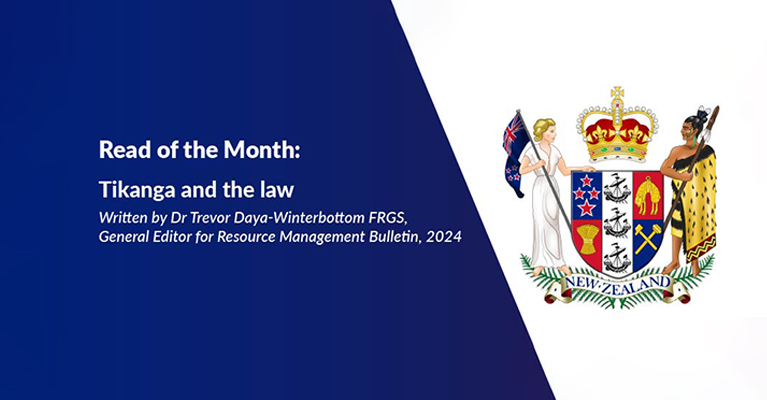Latest Articles
From small town beginnings to national impact: Employment law...
Caroline Rieger believes employment law has the power to transform. "Employment law has the ability to really change communities, both in positive and negative ways," the founder and managing director...
New Zealand Law Society launches major AI research project
When a lawyer asked a New Zealand Law Society Te Kāhui Ture o Aotearoa librarian to track down a case cited by an AI tool - and it didn’t exist - it became clear just how urgently the profession needs...
How to Select a Responsible AI Business Partner
This article was written by Geoffrey D. Ivnik, Esq. | Director of Large Markets, LexisNexis ® in our US office. Lexis+ AI ® was launched in the US in October 2023, and Geoffrey has written this article...
Meet the incoming Managing Director for LexisNexis Asia & Pa...
After more than a decade with LexisNexis, Katy Fixter is stepping into one of the most promising growth markets in LexisNexis – leading the company’s Asia Pacific operations as managing director. The move...
The future of probate law by authors of bestseller
For legal professionals dealing with wills, estates, and probate, Dobbie’s Probate and Administration Practice has long been a go-to resource. Now in its seventh edition, the LexisNexis NZ publication...

Copyright of the Resource Management Bulletin is the property of LexisNexis NZ Ltd and its content may not be copied, saved or emailed to multiple sites or posted to a listserv without the copyright holder's express written permission. However, users may print, download or email articles for individual use.
Written by Dr Trevor Daya-Winterbottom FRGS, General Editor
It is now axiomatic that tikanga is a source of law in New Zealand. Tikanga now forms part of the core curriculum in the LLB degree when tomorrow’s lawyers study public law, contracts, torts, crimes, land law, equity and succession, and legal ethics, and their studies will be completed with a capstone paper on tikanga in the final year of their LLB degrees.
This approach is reflected in the decision of the New Zealand Supreme Court (NZSC) in Smith v Fonterra Co- Operative Group Ltd,1 where Natalie Coates (as counsel for Mr Smith) submitted that tikanga:2
... principles must inform tort law’s development in New Zealand in relation to climate change. There are aspects of tikanga
... that speak to the existing torts of public nuisance and negligence but, in particular, tikanga principles would assist in framing the proposed climate system damage tort. For example ... tikanga would push against a narrow conception of proximity founded on individualism.
The NZSC responded to the submission in the following way:3
It is important to keep to the fore that the specific loss pleaded by Mr Smith in this case is in part tikanga-based. Since that form of loss is an essential fact, in addressing this part of the claim the trial court will be required to engage with tikanga. Apart from any more conceptual impact tikanga may be argued to have on the framing of particular causes of action, that engagement will need to consider the potential effect of tikanga on any special damage requirement in public nuisance ... and, with regard to all causes of action, whether tikanga-related harm is a cognisable form of loss.
In particular, the NZSC emphasised that applying tikanga in the context of tort is “not a new phenomenon” and that it has been applied by the courts “since the early days of the common law’s operation in this country”.4 For example, the NZSC cited Reynolds v Tuangau concerning a dispute regarding title to a pounamu boulder,5 and Baldick v Jackson concerning a dispute regarding a right whale carcass.6
The NZSC also noted that more recently, the Senior Courts have applied tikanga in the context of customary title to the foreshore and seabed in Attorney-General v Ngati Apa,7 and to the relationship between tikanga and the common law more generally in Takamore v Clarke8 and Trans-Tasman Resources Ltd v Taranaki-Whanganui Conservation Board.9 The NZSC stated (summarising the conclusions reached in these decisions) that:10
... tikanga was the first law of New Zealand, and it will continue to influence New Zealand’s distinctive common law as appropriate according to the case and to the extent appropriate in the case.
More importantly, the NZSC emphasised that the “analytical methodology” expounded in Ellis v R11 will generally assist the courts in applying tikanga.12 For example, in Ellis Glazebrook J offered the following preliminary comments:
- Tikanga must inform and, in appropriate cases, control how decisions about tikanga in the common law are made and how tikanga may develop to meet new circumstances.13
- In general, the sources of tikanga and those vested with the expertise and authority to expound on it will be external to the courts.14
- Convening wānanga and conducting the wānanga in accordance with tikanga processes highlighted the strength of tikanga from a procedural perspective.15
In particular, Glazebrook J observed that:16
It is important to acknowledge, however, that the methodology used in this case will not be suitable or even possible for all or even for many cases. The best approach will be contextual, depending on the issues, the significance of tikanga to the case as well as matters of accessibility and cost. In simple cases where tikanga is relevant and uncontroversial, submissions may suffice. In other cases, a statement of tikanga from a tikanga expert may be appropriate. Another mechanism is for the relevant court to appoint independent expert witnesses or pūkenga. I also note that, where questions of tikanga arise in the High Court, that Court may state a case and refer it to the Māori Appellate Court, with the decision binding the High Court.
Overall, Glazebrook J emphasised that the methodology for ascertaining tikanga will be dynamic and that it would not be appropriate “to be prescriptive as appropriate methodologies will be developed by the courts in future cases”.17
This article is part of Resource Management Bulletin, 2024.
The Resource Management Bulletin is essential for those who need to understand resource management issues, the thinking of law-makers and government agencies, problem areas and future developments in resource management.
The editorial team brings together the foremost experts from professional practice and academia to make the Bulletin the leading forum for timely discussion of resource management issues. The Bulletin has a wide mandate: to enable lawyers, planners, consultants, local and territorial authorities, architects, surveyors and many others to keep abreast of new legislation; to help readers gain an understanding of emerging case law; to evaluate new law against previous law, developing scientific knowledge, and global trends; to evaluate the ecological impact of new laws; to facilitate detailed consideration of the New Zealand regime in the context of international environmental law and Treaty of Waitangi obligations; to promote exchanges between lawyers, administrators, Judges, planners, environmental scientists and others operating in the resource management field.
General Editor: Dr. Trevor Daya-Winterbottom. Consulting Editors/Authors: Judge Laurie Newhook, Richard Brabant, Vernon Rive
To enquire about Resource Management Bulletin, submit the form below:
- Smith v Fonterra Co-Operative Group Ltd [2024] NZSC 5.
- At [179].
- At [182].
- At [183].
- Reynold v Tuangau SC Wellington, 7 August 1866.
- Baldick v Jackson (1910) 30 NZLR 343 (HC).
- Attorney-General v Ngati Apa [2003] 3 NZLR 643 (CA).
- Takamore v Clarke [2012] NZSC 116, [2013] 2 NZLR 733.
- Trans-Tasman Resources Ltd v Taranaki-Whanganui Conservation Board [2021] NZSC 127, [2021] 1 NZLR 801.
- Smith, above n 1, at [187].
- Ellis v R [2022] NZSC 114, [2022] 1 NZLR 239.
- Smith, above n 1, at [189].
- Ellis v R, above n 11, at [122].
- At [123].
- At [124].
- At [125] (footnotes omitted).
- At [121].
